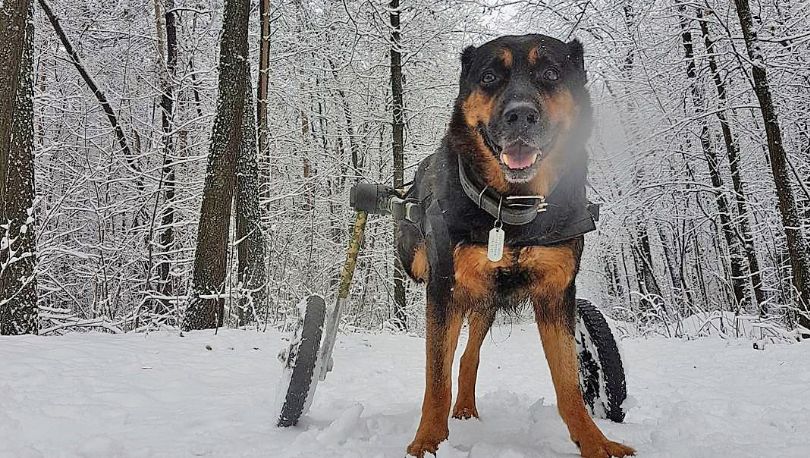Beagle Lifespan: How Long Do Beagles Live? (Life Expectancy)

Keeping Your Pet Safe In Winter
With extreme temperatures, snow, and ice there are a lot of safety concerns during the Winter season. Cold weather pet care is an important part of winter safety, especially for senior and handicapped pets. Here are some ways that you can keep your pet safe this Winter.
Protect Your Dog's Paws
Your dog’s paws are incredibly sensitive to the cold. Ice and snow can become trapped in between your dog’s pads and toes. To avoid snowballs forming between your dog’s paw pads, trim any long hair on your dog’s feet.
Salt and other chemicals used to de-ice pavement can cause severe damage to the paw pads. To protect your dog’s feet on winter walks, your dog should always wear boots. Water resistant pet boots help to keep your dog’s paws clean and dry. They also provide additional traction on icy walks. The drawstring at the top of the boot helps to keep unwanted snow out.
Traction Socks are another great option to protect your dog's feet. The traction socks, have a water-proof silicone sole that keep your pet's feet dry and help to protect against slippery conditions. The knit upper portion of the socks help to keep your dog's paws warm!
Protect Your Disabled Dog's Paws
It's vital to protect the paws of any pet dealing with mobility loss or paralysis. Many paralyzed pets have a difficult time regulating their temperature and suffer circulation issues. Keeping their paws (and the rest of their body!) protected will help them to keep their body temp up as well as protect them against the elements.
Know When It's Too Cold for Your Dog
It's important to keep your dog safe when they're outdoors during the wintertime, but how do you know when it's too cold? Here is a simple temperature guide for a general rule of them:
- 35 degrees Fahrenheit - It may be too cold for little dogs and toy breeds to be left outside. For those smaller pets, make sure they're bundled up.
- 25 degrees Fahrenheit - when it's this cold it can be dangerous for your best friend. Small and medium sized dogs should wear cold weather gear and it's recommended you limit your dog's exposure to the elements.
- 10 degrees Fahrenheit - when it's this cold, it can be life threatening for pets. Your dog should only go outside to go to the bathroom and come right back in.
Limit Your Dog's Outside Time
Just like humans, dogs can suffer from frost bite or hypothermia. On colder days keep outside visits brief. Even breeds who love cold weather shouldn’t be left outside for extended periods. Allow your dog the chance to adjust to any drop in temperature. Pick the sunniest time of day for your walks, late morning and early afternoon hours are a little warmer when the sun is shining.
Always watch your dog for any behavioral cues of discomfort. And a good rule of thumb, if it’s too cold for you, it’s too cold for your pet.
 Common Signs Your Pet is Too Cold
Common Signs Your Pet is Too Cold
- Shivering
- Whining
- Lifting paws off the ground
- Hunching over
- Reluctance to walk
- Walking slower than usual
Pay attention to your dog’s cues, if your dog asks to come inside or expresses any unusual behavior bring them in out of the cold.
 Cold Weather Care for Senior Pets
Cold Weather Care for Senior Pets
Older pets have a more difficult time adjusting to cold weather. As dogs age, they struggle with regulating their body temperature. Senior pets suffering from canine arthritis or hip dysplasia suffer further since these conditions are aggravated by the cold. Adding a daily joint supplement can help to lubricate the joints and help to ease any discomfort caused by the changing temperature.
Most importantly, keep your senior pets warm. By limiting their outside time and giving them a warm place to rest you can greatly improve how your senior pet handles the wintertime.
Watch the video below to see some Walkin' Pets enjoying the Winter Weather:









